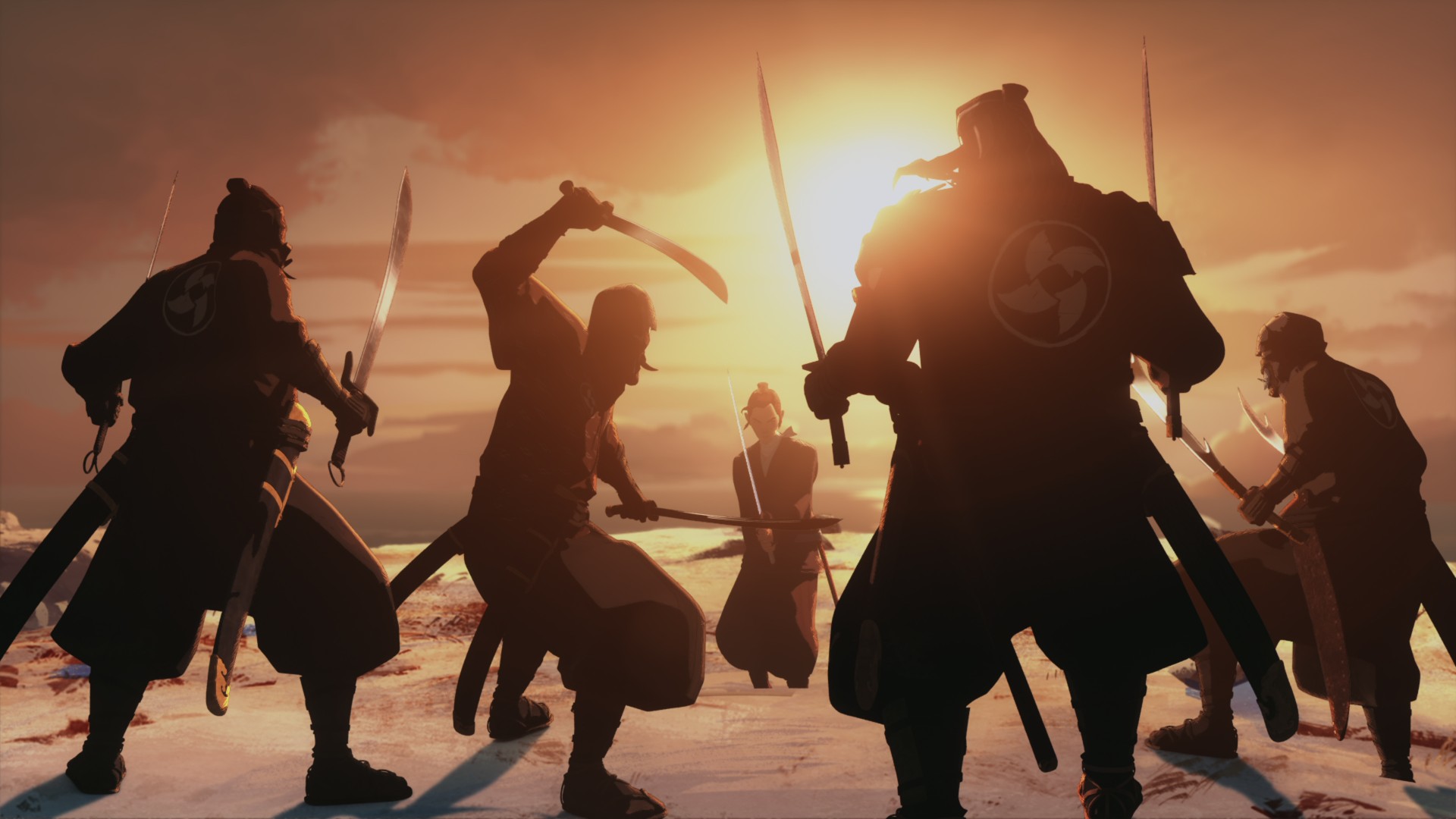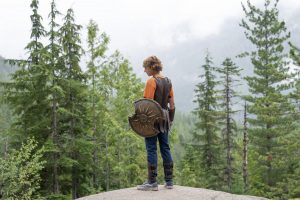
This article contains no spoilers for Netflix’s Blue Eye Samurai.
Academy Award nominee Michael Green and co-writer Amber Noizumi have created Netflix’s latest original animated series Blue Eye Samurai. Set during the Edo Period, the height of feudalism in Japan, a mixed-race samurai woman named Mizu traverses the countryside hunting for those responsible for the death of her mother. Along the way, Mizu incurs the ire of dangerous enemies who pursue her as she quickly realizes her vendetta has far greater consequences and implications for the Land of the Rising Sun.
Packed with blood-soaked fights, Blue Eye Samurai doesn’t pull its punches when it comes to on-screen sex and violence as Mizu seeks vengeance. But more than just being a sweeping revenge yarn, filled with memorable enemies and visually stunning set pieces, the animated series is truly a love letter to classical Japan. Backed by an all-star voice cast, the series delivers cinematic action while keeping sight firmly on its expansive cast of characters caught up in Mizu’s revenge mission.
In an exclusive interview with Den of Geek, Blue Eye Samurai creators Michael Green and Amber Noizumi reveal their personal inspirations and themes present in the animated series, explain how they wanted both the action and eroticism to inform the story, and tease what audiences can expect when Blue Eye Samurai debuts on Netflix.
Den of Geek: Full disclosure, I’m half-Korean and half-white, so this story really spoke to me on a visceral level. How did you want to approach that with Mizu?
Amber Noizumi: I too am half-white, half-Asian – I’ve lived my life being caught between two worlds. It’s interesting because now, in our kids’ classrooms, you see so many people who are half-Asian, half-white, but when I was growing up, I didn’t. [In] exploring that with Mizu, what it would have been like at a time when it was completely homogenous in Japan – it’s heralded as a Golden Age of Japan, the Edo Period, when the borders were completely shut to Western influence.
What would it have been like walking around looking differently? [It was] just exploring that within myself, what I would have felt like then and what the ceilings of anger metastasizing into rage and seeing the catharsis of mowing down a bunch of guys. But ultimately, it’s a story of self-acceptance.
In looking at things like Lady Snowblood and Lone Wolf and Cub –
Michael Green: – and we looked at both! [laughs]
What is it about Edo Japan that just makes for telling good old-fashioned revenge stories?
Green: It was part of it! Revenge was sanctioned. You would go to the local magistrate and say “I need to duel with someone. Can I get the paperwork?” You could declare your intention, almost like “I challenge you to a duel!”
Noizumi: Someone could say “What are you doing?” and [respond] “I’m on a revenge quest.” And people would be like “Oh, okay.” [laughs]
Green: Men could, whereas women couldn’t even travel without chaperones. It was an interesting time.
Speaking of chaperones, you’ve got such a stoic and single-minded protagonist in Mizu. What was it about pairing her with Ringo for this cross-country trek across Japan?
Green: I just think of the most interesting things to watch is a bear and a finger poking them. [laughs] There’s the surprise in what they have to learn from each other. He instantly knows what he has to learn from Mizu, but she has no idea what he’s going to bring to her life. He goes from irritant to albatross to necessary partner.
I love that, in the early episodes, Mizu is being pursued by a force, like LeFors in Butch Cassidy and the Sundance Kid. How did you want to challenge Mizu with this story’s antagonists as she raises Ire in the Land of the Rising Sun?
Green: You’re just always looking like how are we going to challenge her in new ways and keep the downward pressure on. We begin this story when Mizu is really announcing herself, she’s gone public. The suggestion is she might have been doing this for a while and we really only get to that in Episode 5 when we unveil what she’s been doing in the intervening time – some of it anyway, there’s more to tell.
You’re always thinking of what the pressure is going to look like, who’s coming. It’s going to be some mercenaries, some bad mercenaries. We know that she can kill some bad guys in a tavern, but it isn’t until episode 2 where you go “How is she going to go up against professional killers?” It turns out, that’s only the start of the challenges ahead.
More than just intense action, Blue Eye Samurai is a love letter to Japan, providing a window into this culture, like with the fishermen or festival sequences. What elements of Japan did you want to introduce to audiences who might not be aware of them?
Noizumi: When we did our research of the time, it’s just such a rich culture. There’s just so much and it was hard to decide what we were going to use and not. We knew that Mizu was going to have to go on this quest from town to town. We needed to see the richness of the culture and have something to contrast the bloodshed and see some of the beauty that maybe she’s not seeing because she’s so single-minded on darkness.
We needed some beauty, we needed all of that to create a richness for the show, which I think we did.
Green: We also see things that a lot of people don’t know about. When you see a lot of film and television set in that period, you see “Japan’s Greatest Hits.” It’s all the tropes and familiar images and I’m sure we have things that people consider among those. We just went “What are some of the things that people have never seen before?”
We would just find things from our readings and researchers where we’d go “Wow, that would be amazing to see! I’ve never seen that!”
How did you want to script the action? Everybody has their own fighting styles and how they fight says so much about their character, like the dojo fight that feels right out of The Chinese Connection. How was it writing these action sequences that also helped inform the story?
Noizumi: We used a stunt choreographer. The most awesome fight sequences you see are by Sunny Sun. Our supervising director Jane Wu was old friends with him and she had this idea to do stunt choreography. They recorded it – they had a team of people during the shutdown in China to film it – and our animators animated off of that. It’s about the story, the emotional beats of the scene. Sunny Sun and Jane understood those beats and just worked magic around the emotional beats to create the awesomeness that you see now.
I wanted to talk about the sex scenes because sex is a tool and weapon in this world. How did you want to approach incorporating eroticism into this story?
Noizumi: Our #1 rule was every sex scene was going to be in service of the story or the characters. We tried very hard to make sure that it was very true to who the character was, what their goals were. Some of the scenes that you see are culturally tone-setting. In exploring the culture, there was this whole idea of the wood block prints. If you look at them, they are extremely erotic and extremely graphic. There wasn’t the same amount of shame for sex that there was in Western cultures during that time.
We were trying to capture something and when Mizu goes to brothels, she sees some of that in service to Mizu confronting her own sexual identity. It was about world-building.
All eight episodes of Blue Eye Samurai are available to stream on Netflix now.
The post How Blue Eye Samurai’s Fight Scenes Were Crafted appeared first on Den of Geek.




